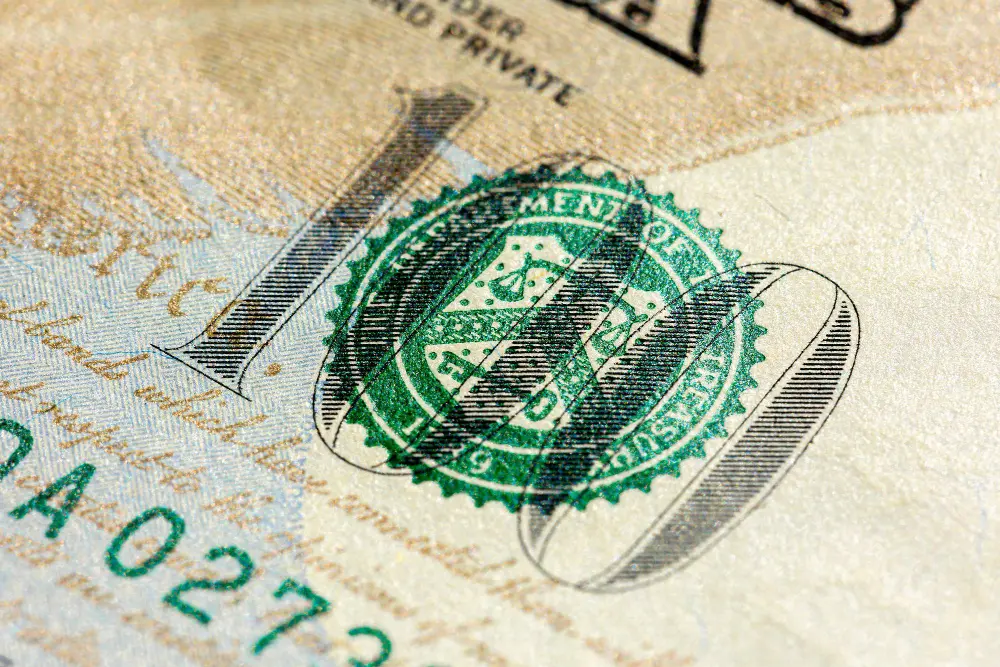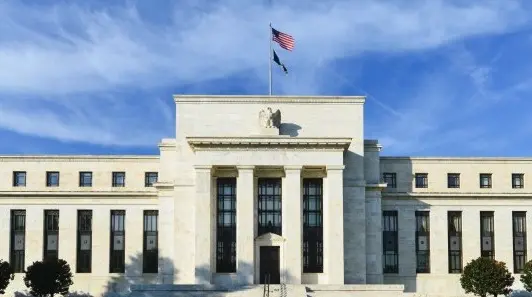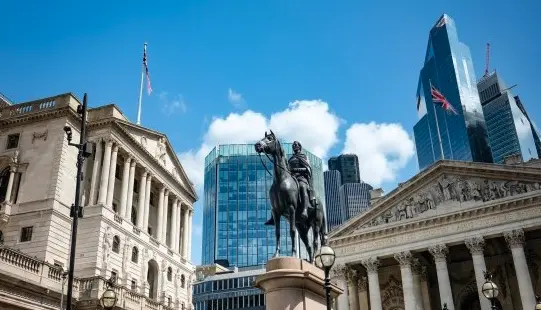In turn, that took the peak-to-trough decline for the S&P 500 beyond 12%, meaning it’s now the biggest overall decline since the 2022 bear market. Otherwise, US HY spreads widened by +53bps yesterday, the biggest move wider since March 2020 at the height of the pandemic turmoil. The 10yr Treasury yield has fallen beneath 4% again, with futures fully pricing in a Fed rate cut by the June meeting. Both the dollar index (-1.67%) and Brent crude oil (-6.42%) suffered their worst days since 2022. And overnight, the 10yr Japanese government bond yield (-16.8bps) is on track for its biggest decline since 2003. So we’re currently experiencing some of the biggest moves in years right across the major asset classes.
Given the significance of the tariff announcement, here at DB Research we’ve been thinking through what this means for our global forecasts. Yesterday we provided an initial guide (link here) on how they’ll shift if the tariffs do hold, although clearly there’s still a lot up in the air, including the extent of any retaliation. For the US, the movement is stagflationary, and our economists think these could reduce the 2025 GDP forecast (Q4/Q4) from 2.2% to around or under 1%, with core PCE up from 2.7% to around 4%. So recession risks will likely rise materially if these tariffs are sustained. And when it comes to the Fed, they think the latest moves make them more likely to cut, even though the direction of travel is highly stagflationary, with the bias now towards up to four cuts this year if this tariff policy holds.
Meanwhile in Europe, our economists’ discuss their latest estimates in a report yesterday (link here). They estimate that the increase in US tariffs could knock 0.4- 0.7pp off EU GDP, and that the EU will likely retaliate. Although the tariffs could complicate the easing trajectory for the ECB, they think they’re likely to continue cutting, and hold their terminal rate forecast of 1.50% at end-2025, with further rate cuts in April, June, September and December. They think the hit to growth will increase pressure on the ECB to cut rates, especially as the euro moved above $1.11 intraday yesterday for the first time in over 6 months.
In terms of what happens now, the big question is how the US’s trading partners might retaliate, as that will play a huge role in determining what the overall economic and market impact will be. For instance, French President Macron said yesterday that companies should pause their US investments, saying “What would be the message of having big European players that invest billions in the American economy at the same time they are hitting us”. Separately, it was announced by Canadian PM Market Carney that Canada would put 25% tariffs on US-made autos that don’t comply with the USMCA deal. At the same time, investors will be watchful of any potential deals to reduce tariffs, with Trump saying yesterday evening that “The tariffs give us great power to negotiate” but that other countries would have to offer something “phenomenal” in negotiations for him to relent. So no signs of any immediate relief.
On the back of all this, investors grew increasingly fearful about a potential US recession, with US equities seeing their sharpest decline in years. The S&P 500 (- 4.84%) , the NASDAQ (-5.97%) and the small cap Russell 2000 (-6.59%) all saw their worst days since 2020, and there were as many as 74 companies in the S&P that fell by at least 10% yesterday. All that meant measures of volatility continued to spike, with the VIX index (+8.51pts) moving up to 30.02pts, its highest level since the turmoil last summer. And given mounting fears of a downturn, the more cyclical sectors drove the underperformance, with the Magnificent 7 (-6.67%) posting its worst day since July and extending the decline from its December peak to -24%. Meanwhile in Europe, the declines weren’t quite as bad, but even there the STOXX 600 (-2.57%) saw its biggest move lower since August.
Whilst growth fears were at the forefront yesterday, investors were also becoming a lot more concerned about inflation. In fact, the US 1yr inflation swap (+8.3bps) rose for a ninth session in a row to close at its highest level since 2022, back when the Fed were still hiking by 75bps per meeting to get inflation under control again. However, because of the growth fears, investors also priced in that the Fed would cut rates more aggressively over the months ahead. In fact as we go to press this morning, futures are now pricing over 100bps of rate cuts by the December meeting, and are fully pricing in an initial cut by the June meeting. They even see a 34% probability of a cut at the next meeting in May, so all eyes will be on Fed Chair Powell’s comments today to see his reaction.
With investors worried about the growth shock and pricing in more rate cuts, that helped sovereign bond yields to move lower across the curve, albeit with a very sharp steepening. For instance, the 2y Treasury yield (-17.8bps) fell back to 3.68%, and the 10yr yield (-10.1bps) fell to 4.03%, yet the 30yr yield (-3.0bps) saw a smaller decline to 4.47%. And over in Europe, there were also declines as investors priced in more ECB rate cuts, with yields on 10yr bunds (-7.0bps), OATs (-5.0bps) and BTPs (-4.3bps) all moving lower.
Over in the FX space, there was a huge depreciation in the US Dollar yesterday, with the dollar index (-1.67%) posting its biggest daily decline since 2022. That included a +1.83% move for the Euro, which closed at $1.1052, which is the first time it’s closed above $1.10 in six months. More broadly, our FX strategists are maintaining their bullish EUR/USD view, and George Saravelos warned yesterday (link here) that there’s an increasing concern that the dollar is at risk of a broader confidence crisis.
Amidst the huge market moves, sentiment wasn’t helped by the latest ISM services data, which came in beneath expectations in March. The headline index was down to a 9-month low of 50.8 (vs. 52.9 expected), and the employment component (46.2) slumped to its lowest since December 2023. That said, for now at least, the labour market hasn’t shown an obvious sign of deterioration, with the weekly initial jobless claims at 219k over the week ending March 29 (vs. 225k expected), which pushed the 4-week average down to 223k.
That focus on US data will continue today, as we’ve got the March jobs report coming out at 13:30 London time. Clearly it won’t account for the full impact of these reciprocal tariffs that are now coming, but it will be an important test as it’s one of the first hard data prints we have for the month of March. In terms of what to expect, our US economists are looking for nonfarm payrolls to come in at +150k, with the unemployment rate rounding up to 4.2%. You can see their full preview and register for their post-release webinar here. Later on today, we’ll then hear from Fed Chair Powell, who’s giving a speech on the economic outlook, so that will be heavily in focus to hear about how the Fed are thinking about tariffs and their reaction function. Ahead of that, we did hear from Fed Vice Chair Jefferson yesterday, who said “there is no need to be in a hurry to make further policy rate adjustments.
Overnight, this direction of travel has continued in markets, with sharp losses in Asia that built on yesterday’s moves. For instance, Japan’s Nikkei is down another -3.74%, on top of its -2.77% move yesterday. So as it stands, the index is down - 9.93% for the week, which would be its worst weekly performance since the pandemic turmoil of March 2020. That comes amidst a sharp appreciation in the Japanese yen, which is currently at 145.62 per US dollar this morning. Moreover, there’s been an astonishing move in Japan’s government bond yields, with the 10yr yield (-16.8bps) on track for its biggest daily decline since 2003. Meanwhile in Australia, the S&P/ASX 200 (-2.24%) has also built on its Thursday losses, leaving it on track for its worst weekly performance since 2022. And in South Korea, the KOSPI is down -1.71%. Equity markets in China are closed for a holiday.
To the day ahead now, and the main highlight will be the US jobs report for March. Other data includes German factory orders and French industrial production for February, along with the construction PMIs for March in Germany and the UK. Elsewhere, central bank speakers include Fed Chair Powell, along with the Fed’s Barr and Waller.
















































































